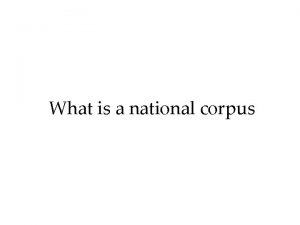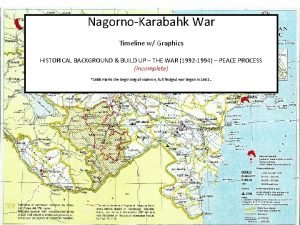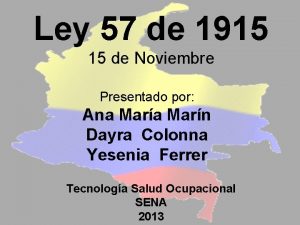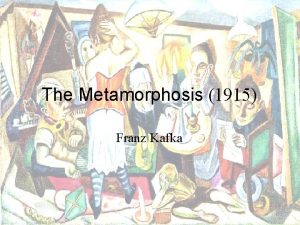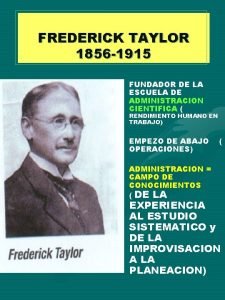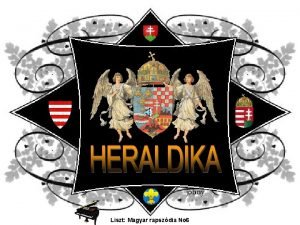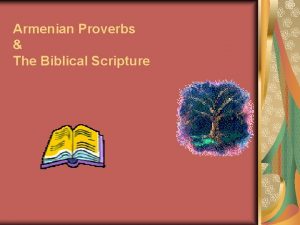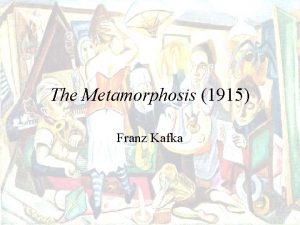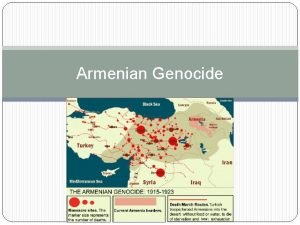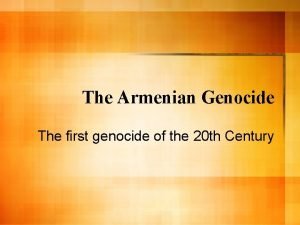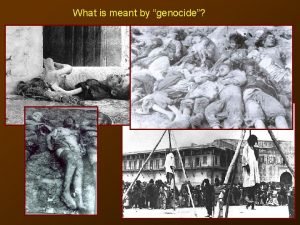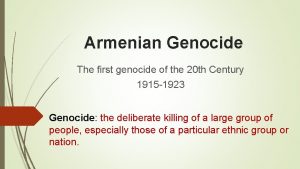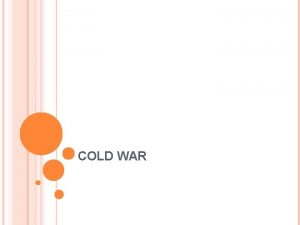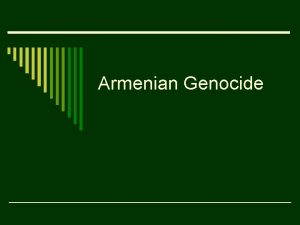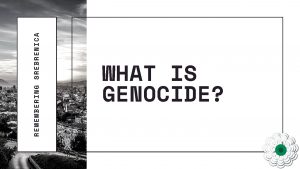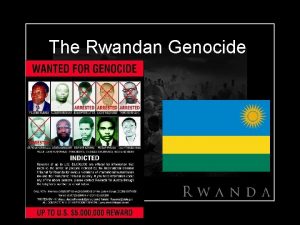The Armenian Genocide APRIL 24 1915 Map of












- Slides: 12

The Armenian Genocide APRIL 24, 1915

Map of Historic Armenia & the Ottoman Empire

Massacre Sites & Death Marches

Political • Ottoman Empire lost significant territory to west • Russia sides with Serbia as WWI begins • Conference of Berlin: Sultan swears to end Millet System and give political voice to non-Muslims (nope) Economic • Millet System – Non-Muslims pay more taxes and have no political voice • Urban Armenians tend to be professionals: doctors, lawyers, business owners = earn more money. Historic Greater Armenia straddles Ottoman & Russian Empires – propaganda suggests that the Armenians are sympathetic to the Russians Cultural Turks were Muslims, Armenians were Orthodox Christians and therefore, infidels or “gavours” meaning unbelievers. Causes

THE YOUNG TURKS Armenians refer to Talaat as the Turkish Hitler. The group of reformers calling themselves the "Young Turks" overthrow Sultan Abdul Hamid and establish a more modern constitutional government. Armenians hope to have an equal place in this new state, but the nationalistic Young Turks, led by a triumvirate known as the Three Pashas, soon announce their plan to "Turkify” (one religion, one language, one people), the empire and remove all threats to the empire.

Timeline of Events • • 1894 -1896 – Sultan Abdul Hamid II’s policies result in death of 100 K Armenians 1908: Sultan overthrown by Young Turks (constitutional monarchy) promise reform and tolerance. 1909: Hamid II briefly returned to power, 30 K Armenians killed 1914: (Nov. ) Ottoman Empire enters WWI 1915: – (Jan. ) Armenians accused of subversive acts (poisoning bread, plotting against gov’t) – (March) Mass deportations begin – (April 24 -25) Red Sunday – 600 Armenian intellectuals and community leaders arrested in Constantinople. Later executed en masse. – (Sept. - Dec) Temporary Order of Expropriation and Confiscation of all Armenian property – 100 s of 1000 s deported from cities across Empire (Map #2) – (Oct. ) Berlin announces that news of massacres are an allied fabrication. Future actions must be done away from allied eyes. 1916: – (Jan. ) Photographing dead Armenians is forbidden by foreign officers. US Ambassador Morgenthau it told it is pointless to speak about the Armenians – (Jan 23 - March 10) – 47 Days – of 486 K Armenians deported – 364 K are reported dead. – (Feb – May) – More Armenians are massacred and Turkey rejects relief efforts offer by the US – (Sept) – All Armenian orphans (only those young enough not to remember parents) given Turkish names. – (Oct) – German Chancellor receives report that of the 2 Million Armenians in Turkey, one and half million had been deported. Of these 1, 175, 000 were dead; 325, 000 were still living 1917: – (March)– Allied forces push their way into Baghdad & (Dec) Jerusalem – (April) – Turkey breaks off relations with the US. 1918 – (March) Enver orders the death of all Armenians over 5 years of age with in 48 hours. German chancellor attempts to stop him. – (Oct) Three Pashas flee to Germany, where they are given protection. The Armenian underground forms a group called Operation Nemesis to hunt them down. – (Nov. ) Armistice signed between the Allied and Central Powers – The Great War has ended.

The American Ambassador

Armenian genocide dispute • • • Hundreds of thousands of Armenians died in 1915 at the hands of the Ottoman Turks, whose empire was disintegrating Many of the victims were civilians deported to barren desert regions where they died of starvation and thirst. Thousands also died in massacres Armenia says up to 1. 5 million people were killed. Turkey says the number of deaths was much smaller Most non-Turkish scholars of the events regard them as genocide - as do more than 20 states including France, Germany and Russia, and some international bodies such as the European Parliament Turkey rejects the term "genocide", maintaining that many of the dead were killed in clashes during World War One, and that many ethnic Turks also suffered in the conflict

The Turkish Point of View • • • The story they tell is missing the terror that was brought, the revolts that were led against their government, the treason and terrorism. Some Armenians took part in violent acts against their fellow Ottoman population. From 1890 to 1915 armed revolts were staged, some joined invading armies and terrorized the population in hopes of getting the Turks to flee their own land. The one sided version told to people masks the truth of many that were lost at that time. In reality, the Turkish losses were four times as worse than the Armenians. They were not the only minorities in the Ottoman Empire, there were Jews, Greeks and Arabs, and the fact that they were singled out to be relocated shows there was a reason behind it and they were not as innocent as they have claimed. Do Turkish deaths and suffering not mean as much? It is insulting to only memorialize and show respect for Armenian deaths but none for all the other lives lost. The times following the tribulations proceeded without much trouble between the Turkish and Armenian people leading up to the 1960 s. Bitter memories were exploited and added fuel to the fire. Grievances led to anger and violent anti-Turkey reactions exploded. To gain the attention of the world many sadly resorted to terrorist attacks. Over 30 Turkish diplomats and their families were brutally murdered in attacks since 1973 by Armenians in attempts to seek some sort of vengeance. Of the 2. 5 million people lost during WWI, 523, 000 of them were by Armenian terrorists. People have been blinded by propaganda and do not see the other victims.

YOU DECIDE


In anticipation of the milestone year of 2015, the Republic of Armenia issued the illustration at left as the official emblem of the worldwide observance of the centennial year of the Armenian Genocide. The forgetme-not flower expresses theme of eternal remembrance, and is also meant to symbolically evoke the past, present, and future experiences of the Armenian people. What follows is an explanation of the various components making up the emblem: THE PAST: The black center represents the sufferings of 1915, and the dark aftermath of the Armenian Genocide. THE PRESENT: The light purple petals represents the unity of Armenian communities across the world—all of whom stand together in this 100 th year of remembrance. THE FUTURE: The five petals represent the five continents where survivors of the Armenian Genocide found a new home. The dark purple color is meant to recall the priestly vestments of the Armenian Church—which has been, is, and will remain at the heart of the Armenian Christian identity ETERNITY: The twelve trapezoids represent the twelve pillars of the Dzidzernagapert Armenian Genocide memorial in Yerevan, Armenia. The yellow color represents light, creativity, and hope.

